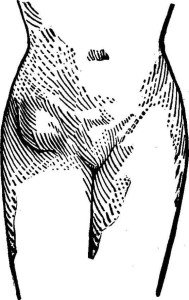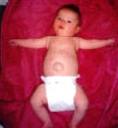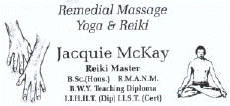
Hernia
Recently Viewed
 Eye Problems:
Eye Problems:The fine skin around your eyes is the first to show the signs of ageing as well as dark circles and puffiness. Don't be tempted to deal with the problem by slapping on Continue Reading →
 Femoral Hernia:
Femoral Hernia:A femoral hernia like an inguinal hernia)appears in the groin. Femoral hernias happen at the hole in the wall of the abdomen where the femoral artery and vein pass from Continue Reading →
 Umbilical Hernia:
Umbilical Hernia:If you have a swelling or pain in the tummy button called your umbilicus, this is due to a rupture known as a hernia. Because of its position in the tummy button the Continue Reading →
 Sinus Problems:
Sinus Problems:The most common ailment seen by physicians is what is generally referred to as an upper respiratory infection. In this category are such things as colds blocked stuffy Continue Reading →
 Epigastric Hernia:
Epigastric Hernia:An epigastric hernia appears through the abdominal wall, between the bottom of the breastbone and the navel. Both men and women may have this type of Continue Reading →
A hernia is a protrusion of an organ/part of an organ through the wall of the cavity which usually contains. A hernia occurs when a weakness or a tear of the abdominal wall , as a result of aging, injury, a former surgical incision or a condition there is congenital .
Hernias generally increase in size because of the pressure exerted on them, for example, by a loop of the intestine or fatty tissue that pushes the weak or torn abdominal tissue. As a consequence forms a bag or sack on the abdominal wall. At this point you can sometimes see a lump or lumps.
While the abdominal contents that pushes the bag increases in size, appears a lump. Sometimes the lump or protrusion is can flatten, knocking it or by pressing against the same.
Although this phase, known as reducible hernia , hernia is not an emergency situation, likely be needed surgery to repair it.
If the intestine is trapped or hernia irreducible , referred to as incarcerated hernia , and it can be quite painful. Typically, bulk cannot be flattened and may require an immediate operation. A hernia is very trapped or strangulated hernia loses blood supply, blocking the intestinal flow and requires urgent surgical intervention.
Unfortunately, the hernia will not disappear alone. In fact, hernias usually worsen over time, what makes the repair of hernias surgery today standard treatment.
Minimally Invasive Hernia Repair
- Your doctor practised various incisions small (usually between three and six) in the abdominal wall that surrounds the hernia.
- Carbon dioxide gas is pumped into the abdomen. Following surgical instruments and a laparoscope (camera special), are entered into the abdomen through the incisions.
- Hernia is repaired through a “repair with patch” technique (see the description in open surgery, above). However, in this repair, the patch is placed below the muscles.
- The gas is released and the skin incisions are closed.
Most of the operations by laparoscopy are interventions with general anaesthesia in which the patient receives the high the same day. Because only require small incisions, laparoscopic surgery offers a faster recovery time, less pain, decrease in the recurrence of the hernia and fewer complications
Open Hernia Repair
- Your physician practice an incision on the same side that hernia, at a right angle above the fold in which the abdomen meets the thigh. This can be done with anaesthesia epidural local or general.
- Hernia can be repaired in three ways:
- “Primary repair” – also known as “repair with suture”, this repair involves sewing the tissues of the abdominal wall together with stitches.
- “Repair with patch or repair without tension” – a patch is placed over the area weakened around the hernia on the muscles. Over time, the body’s tissues are integrated with patch, helping him to stay seated, to form a durable repair.
- “With Plug and patch repair” – It is placed a plug to fill the space within the inguinal hernia, to strengthen and support the weak tissue. A patch over the area is then placed which is 100% bio-absorbable and is designed to avoid the complications related with the permanent plugs for hernias.
Recently Viewed
 Acne and Acne Treatment:
Acne and Acne Treatment:Acne can be very troublesome for teenagers, and sometimes it persists into adulthood. It may require prolonged treatment, sometimes with herbs that can influence the Continue Reading →
 Reiki Healing:
Reiki Healing:Everything you need to know about Reiki whether you want to recap on the basic routines or realise the power and potential of each level; learn special techniques to Continue Reading →
 Health Benefits of Cinnamon:
Health Benefits of Cinnamon:Cinnamon is part of the family Lauraceae. Its flavor is sweet, woody and spicy.Warmer climates are needed to grow well. Cinnamon is native to Sri Lanka. Canela producing Continue Reading →
 Mediterranean Diet:
Mediterranean Diet:The Mediterranean diet is based on the traditional foods of Greece, Italy and other countries that in the Mediterranean area. Whole grains, vegetables, legumes, fruits, Continue Reading →
 Paleo Diet:
Paleo Diet:The Paleo diet isn't so strict on carb intake, ie fruits and starchy vegetables are fine with Paleo but the Keto diet excludes many vegetables and most fruit. The Paleo Continue Reading →
